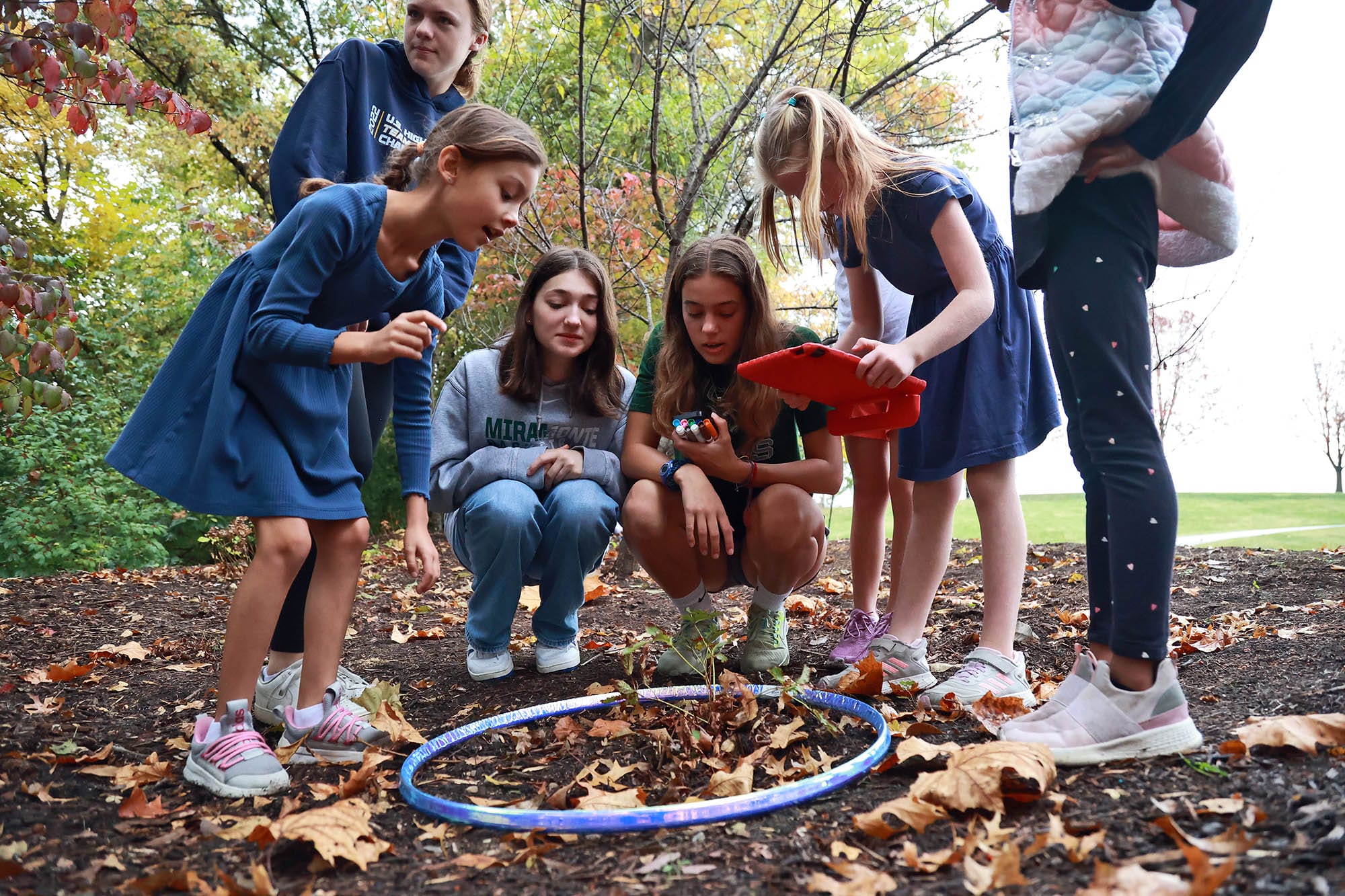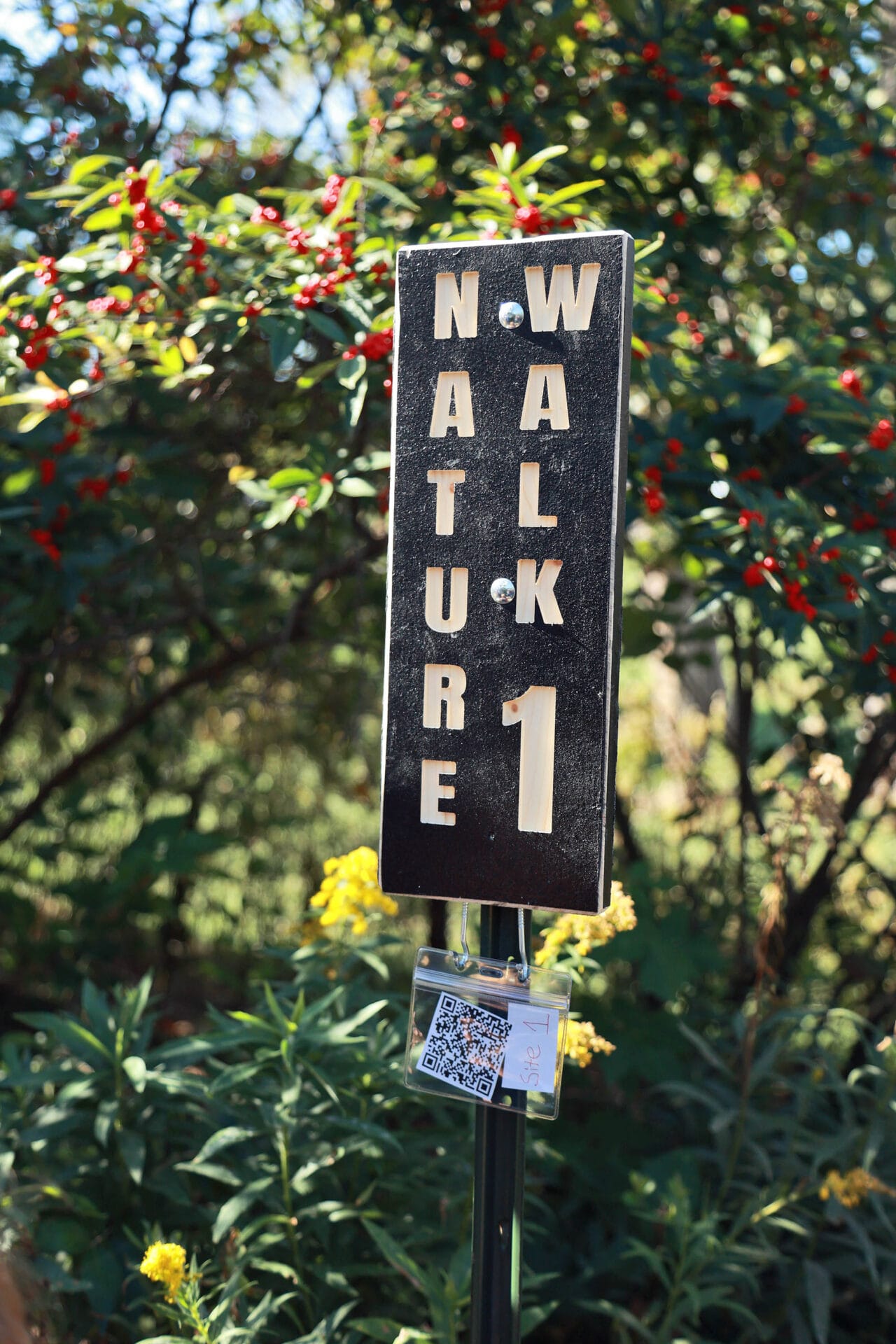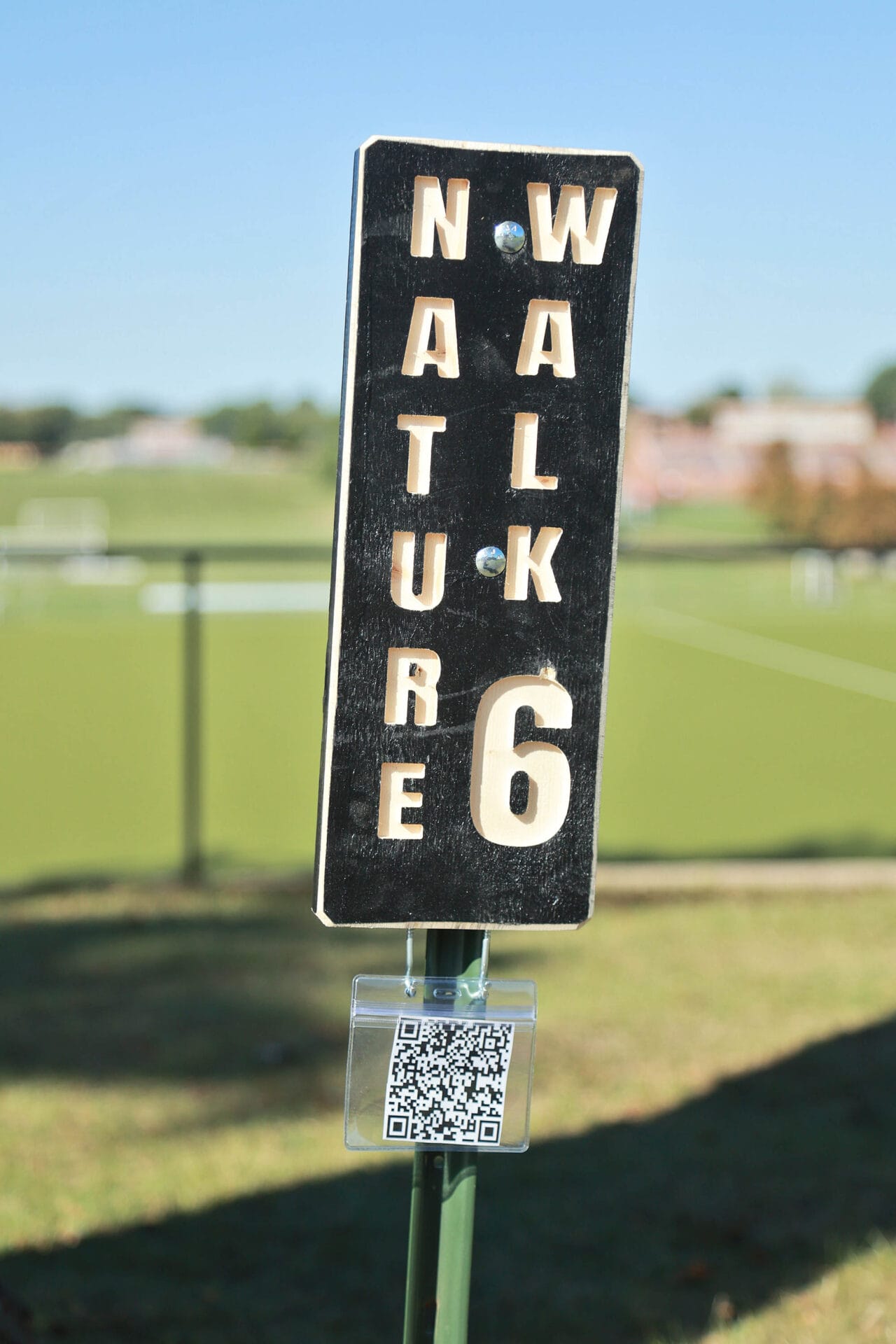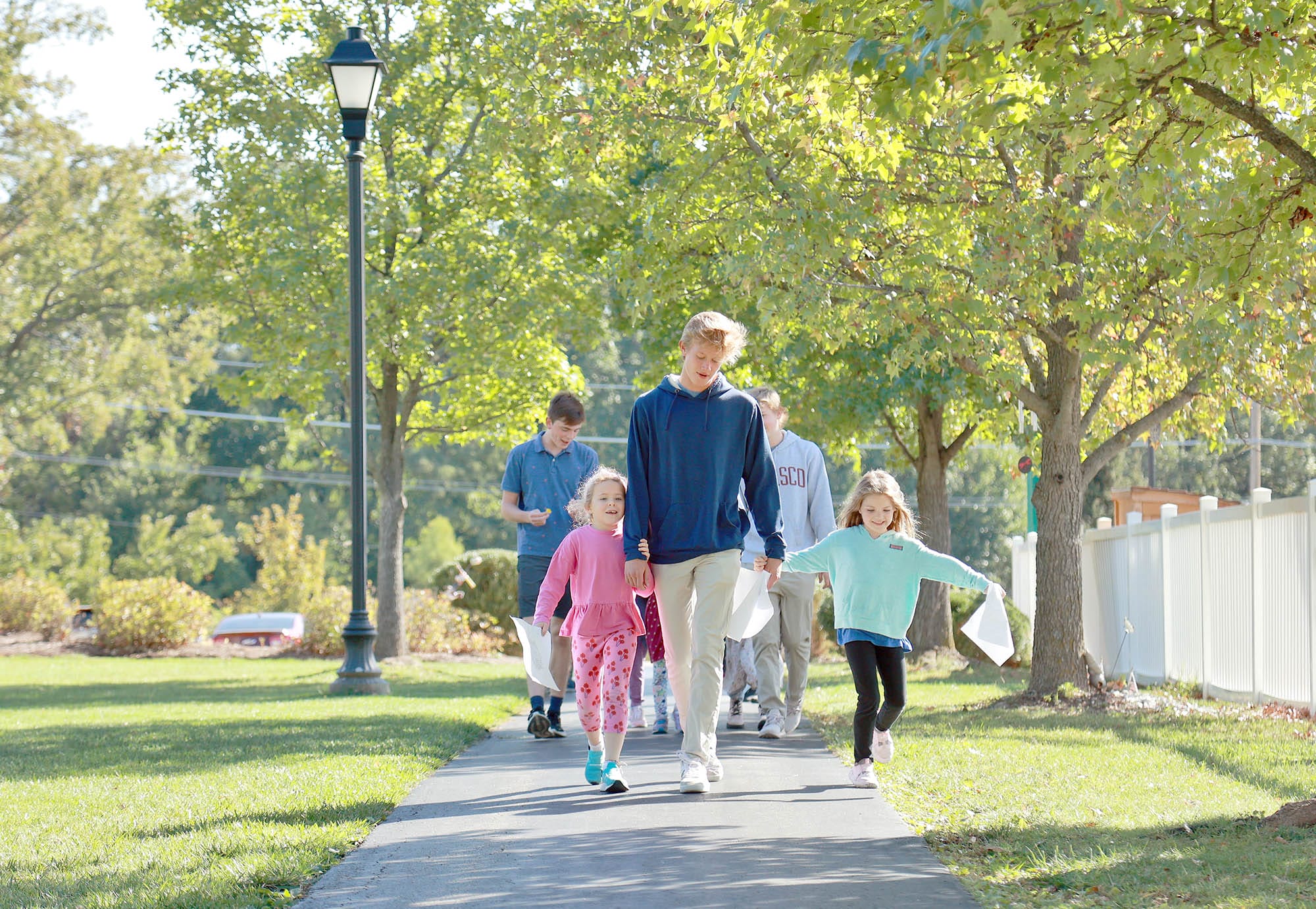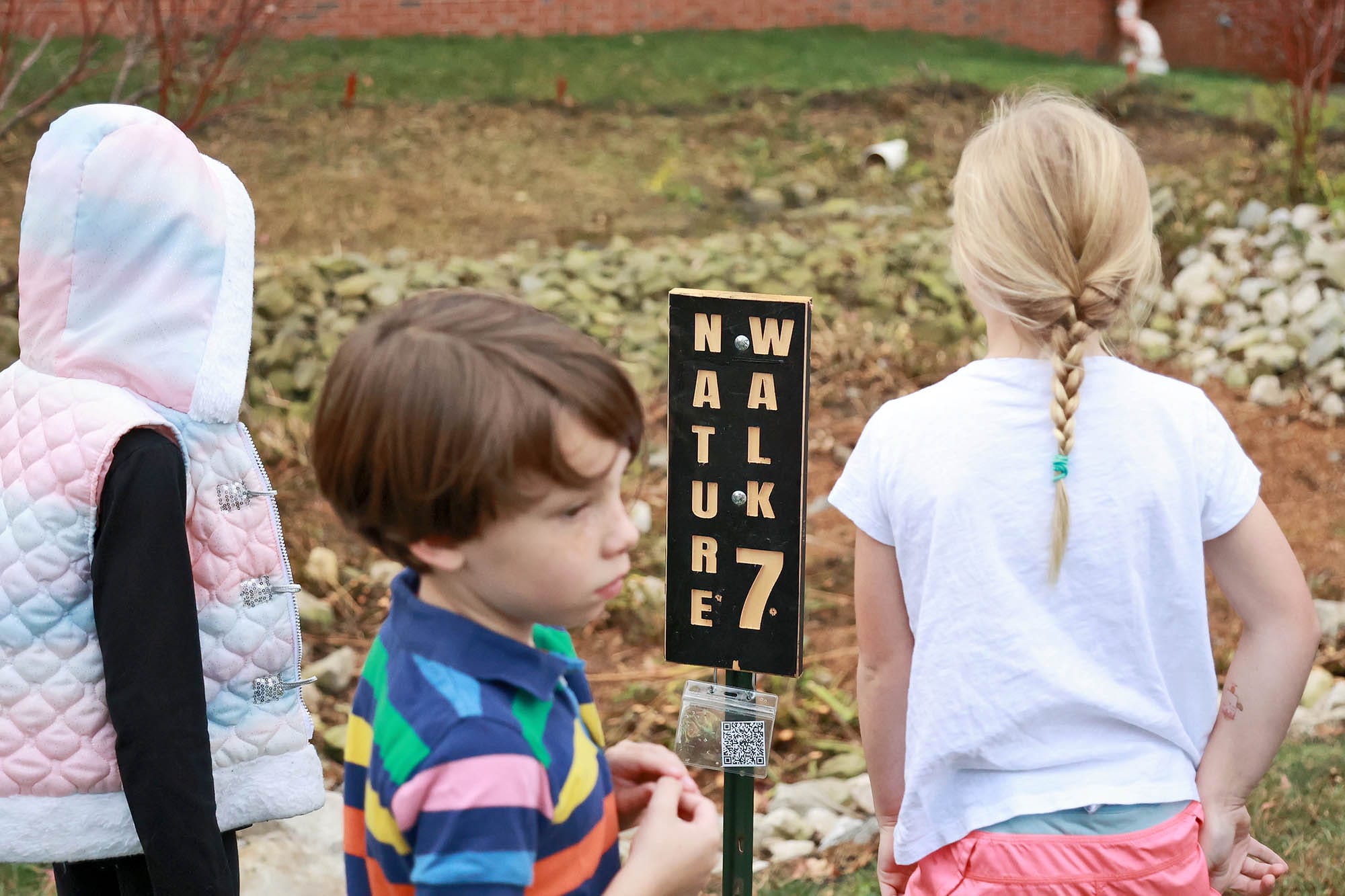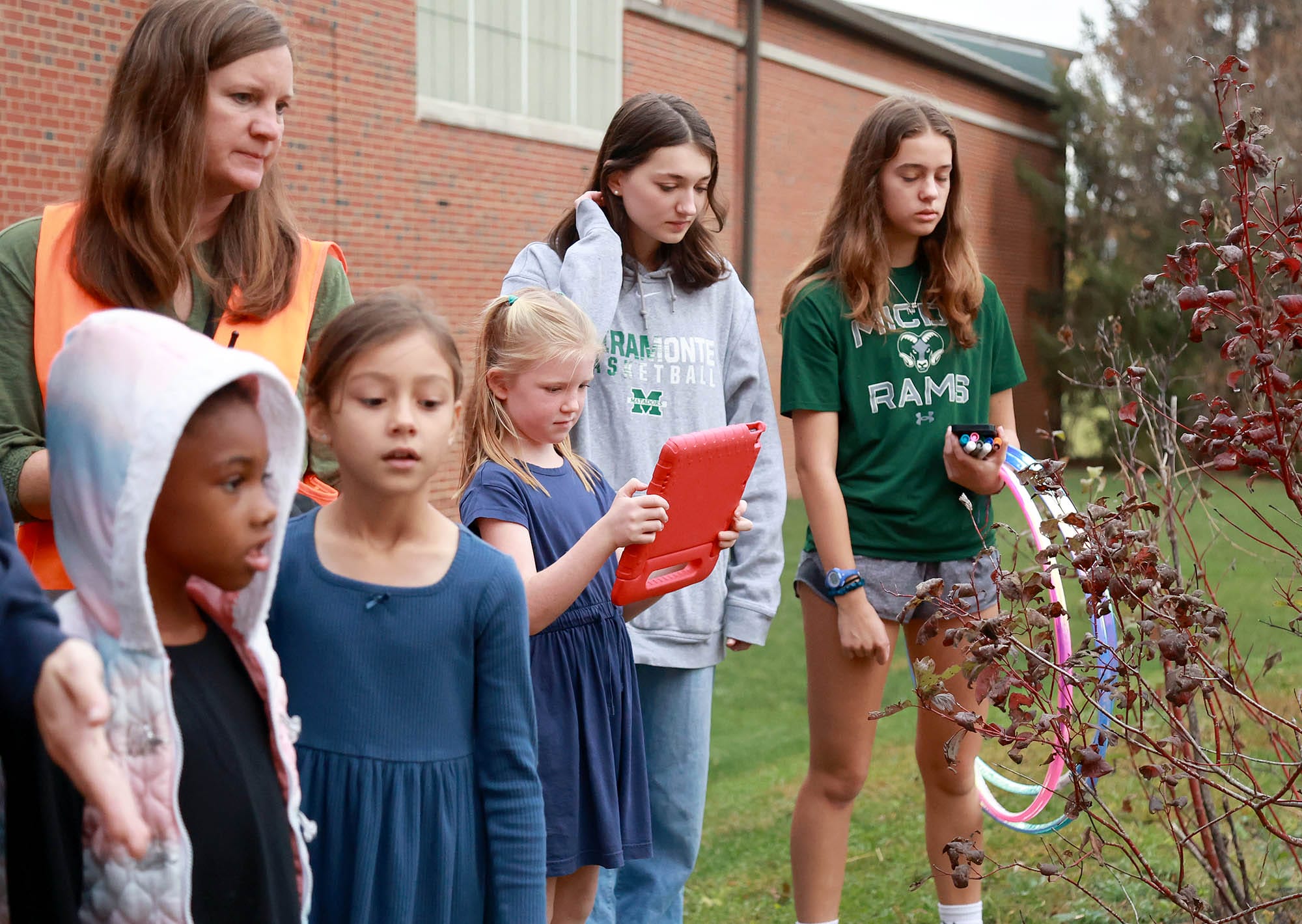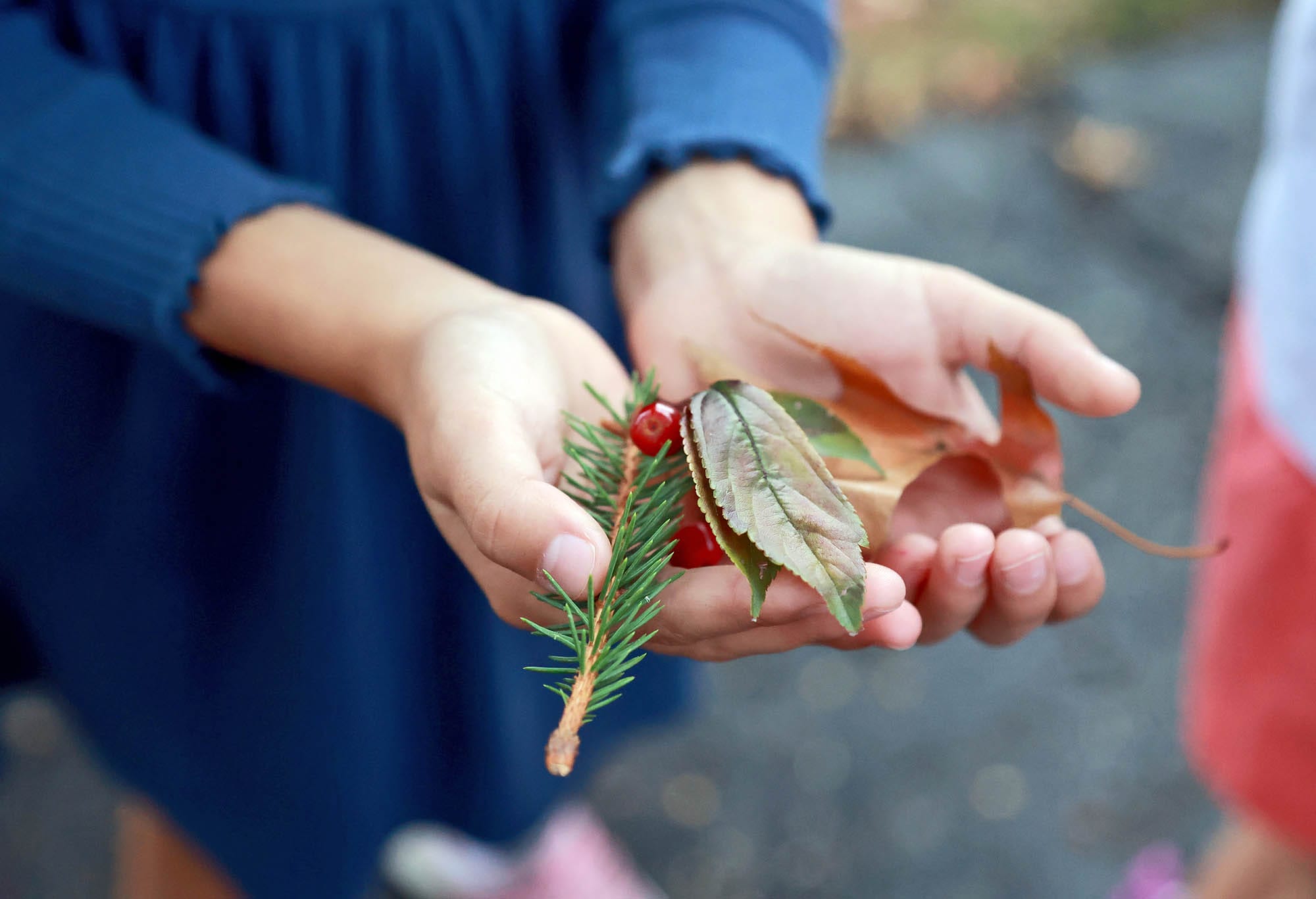“Stop and smell the roses” is an old idiom that still rings true today, and the students in our Upper School Exploratory Botany class are taking it literally as they work to combat plant blindness. Plant blindness is exactly what it sounds like: “Human inability to see or notice plants in one’s everyday life. It also refers to failing to recognize the role of plants on earth and believing that plants are somehow inferior to animals.” (Wandersee and Schussler, 1999, 2001)
Upper School Science Teacher Laura Bradford is developing this unit with her nine students, and she is excited to explore several different themes: independent work, experience in the makerspace, and cross-divisional connection.
First, she tasked each student with choosing a location on campus and creating a simple activity to complete at that destination. “We walked around campus doing a nature walk of our own and marked down our favorite spots along our way,” explained Wyatt Dickherber ’24. “People picked many different places such as a pond, a tree with interesting roots, and a fountain. Personally, I picked a tree because its roots were exposed out of the ground, and I thought it was really cool.” Bridget Clennan ’24 said, “I chose my location based on where I thought the biggest variety of plants were and what would be the most accessible.”
After selecting their spots, the students hit the makerspace to create signs marking their locations. They also decided to create and produce a token for each spot to give the first-grade students they had invited on a nature walk. Julianna Resch ’24 was excited to bring experience from other classes to the makerspace. “I enjoyed the design projects leading up to the walks with our work down in the makerspace,” she said. “Using my knowledge of Adobe Illustrator allowed me to help my classmates and friends with questions or problems about the application. I thoroughly enjoy teaching the many skills that I find interesting as well as helping my classmates and friends with these projects.”
“Designing a nature walk for kids this young was a challenge because I had to explain a high-level topic in a way they would understand,” said Dickherber. “Doing it through a means of an activity helped a lot not just with that, but also with engagement. At the end of the day, making sure the first graders had fun with the activity and learned to appreciate nature more was the most important aspect of this project, and I believe we succeeded in that goal.”
Clennan agreed. “The goal of the nature walk was to get kids to interact more with their environment and learn about plants,” she explained. “It was very fun to guide the first graders because they were really eager to interact with nature and did not stop moving. They wanted to know what plants were what.”
“We wanted to spread appreciation and excitement about the wide diversity of plants around our campus,” Resch said. “Even though we personally showed the first graders our different stations that highlight a certain topic we found interesting, our signage to label the station as well as information and directions for the activity means everyone around campus can participate and learn new information about the flora on our grounds.”
Bradford has been thrilled with the work of her dedicated students. “Since it was the first year of this, I would say we are ‘prototyping’ the activities we have created.” She’s excited to grow the program in future years to include activities for all grades. “My plan is to expand what we have done this year and increase/improve the stations. The goal for this year was to have destinations for first graders and have an activity to complete at the site that taught them a little about nature.” She liked the wooden tokens her students gave to their new friends as rewards for making it to their destinations and learning about the plants there. “I love finding any connection between the divisions, and an elective class like this gives me a lot of freedom to find projects that can branch out,” she said.
Resch was stunned to learn about the variety of plant life on campus. “The walk was definitely the best part of the experience, and I loved seeing the young scholars excited even if it’s just identifying the different leaves from the numerous varieties of trees around campus. I did not know how many different trees we have until I started to identify the different leaves for my activity.”
Clennan discovered that the landscape is ever-changing. “It was definitely surprising to learn that my plant pit got demolished for the winter but there were plenty of smaller plants hidden underneath that the second group was able to look at,” she said.
Everyone agrees that it’s good to slow down and examine the variety of plant life that surrounds us each day. “It’s more important than ever to spend time outdoors and appreciate the nature around you. Take a walk outside sometime throughout the day and you will not only feel better, but also see a world that you have been ignoring,” said Dickherber.
“I would encourage anyone to take the time to look around, especially during this time when the seasons change,” said Resch. “Not only is this time of year gorgeous, you can learn the smallest things about the different flora around. For example, what type of plants have dropped their leaves? If a tree is currently in bloom, it could be a Hawthorn!”
Clennan said, “It’s often it’s easy to miss plants because they are everywhere, but if you stop every once in a while to appreciate a flower or look at a leaf, it’s actually pretty fun and you’d be surprised at everything you can find.”
